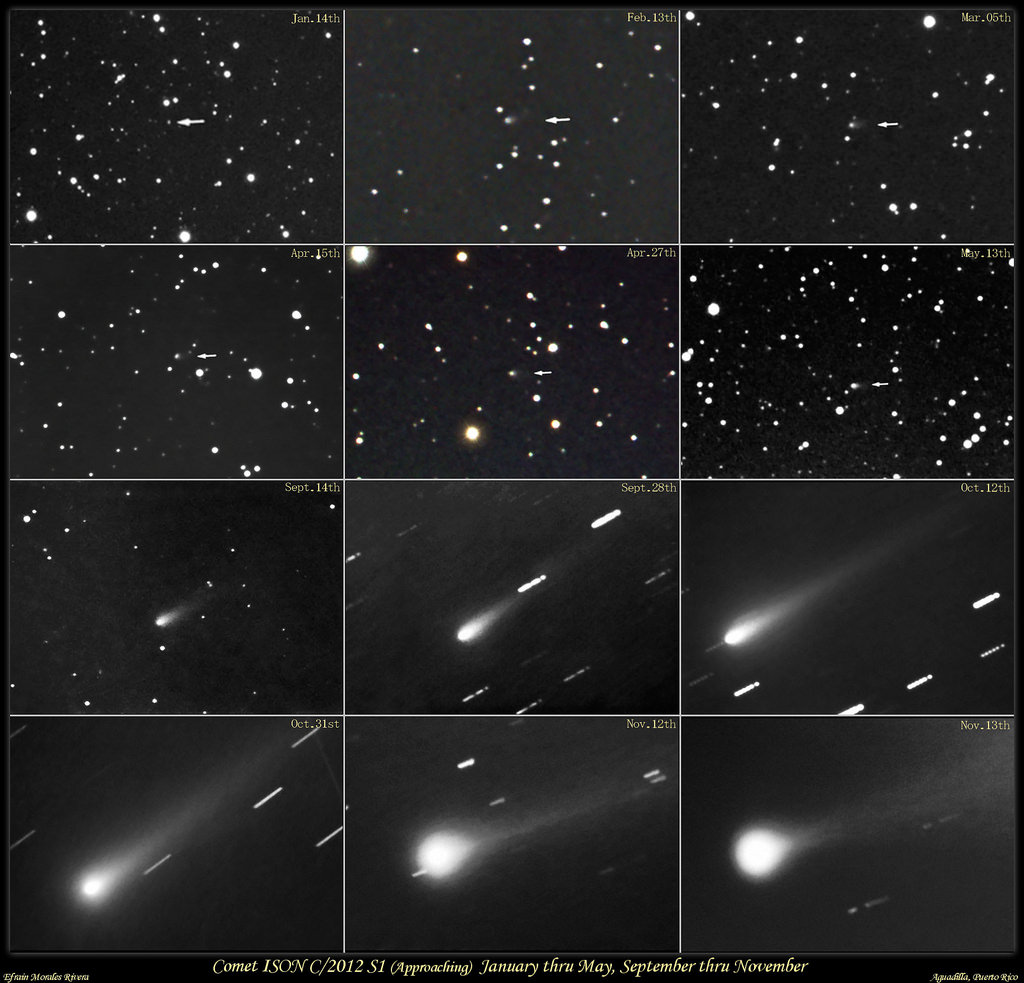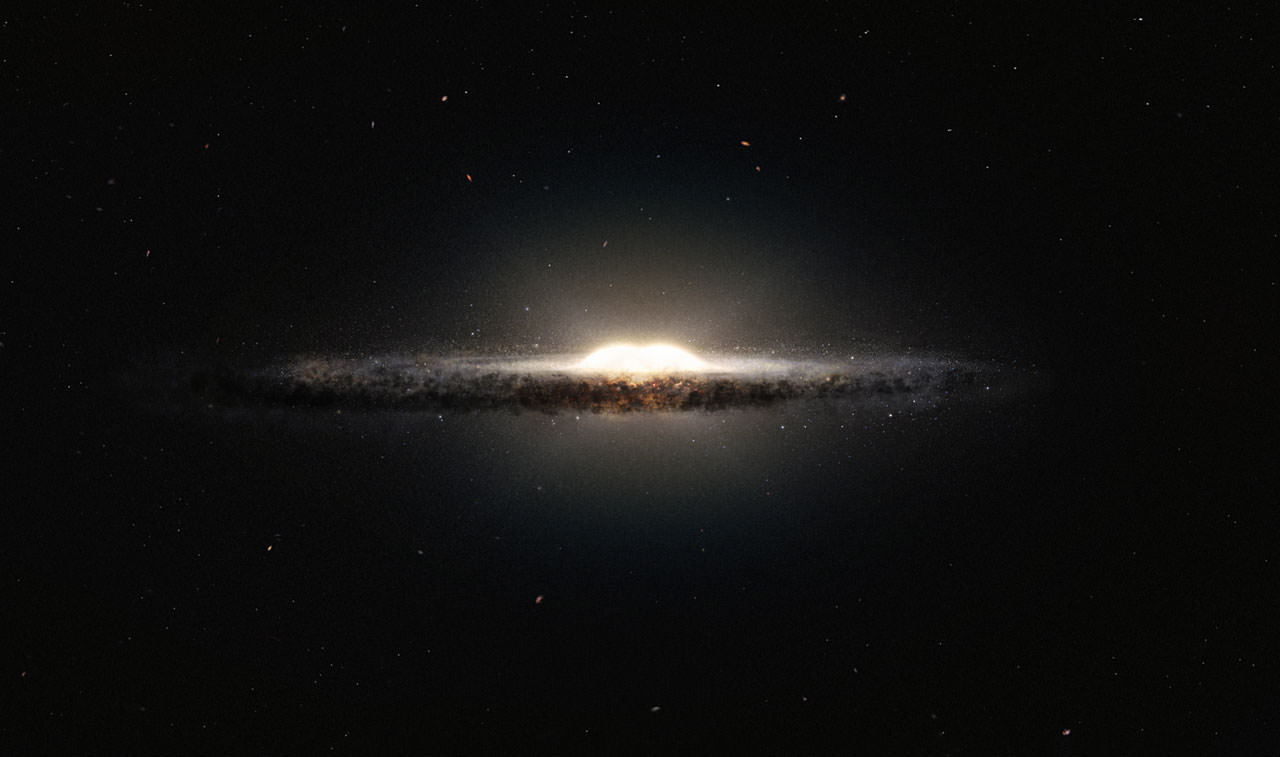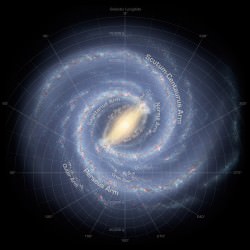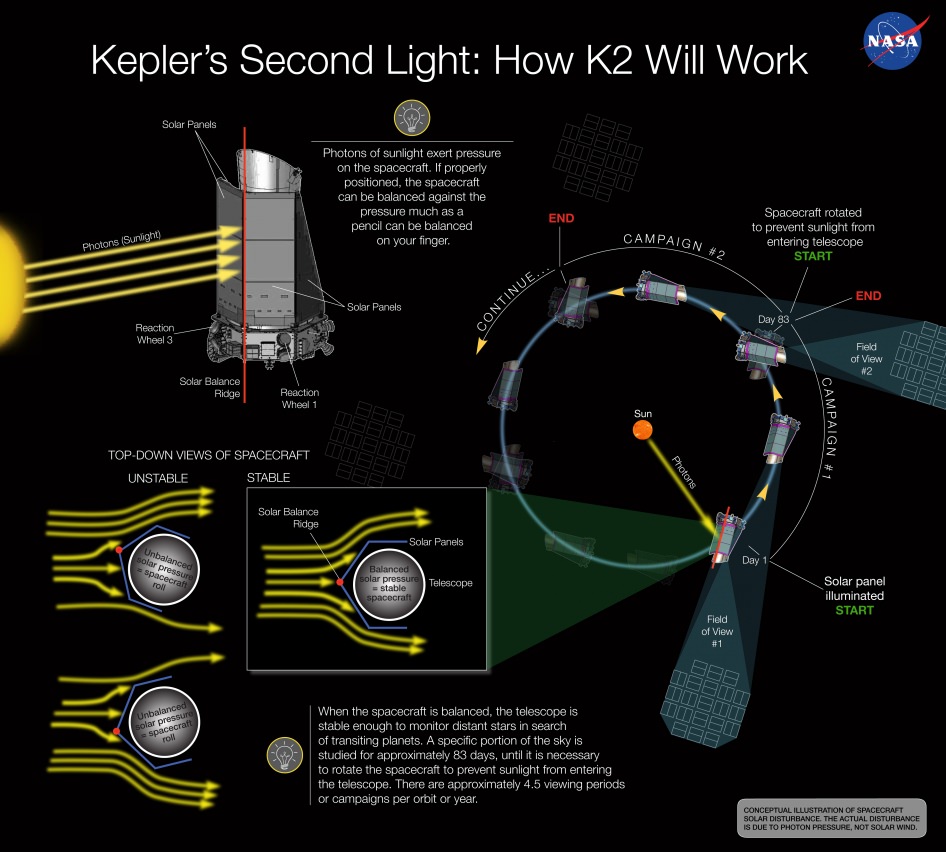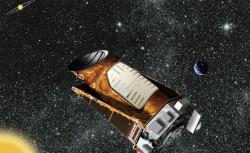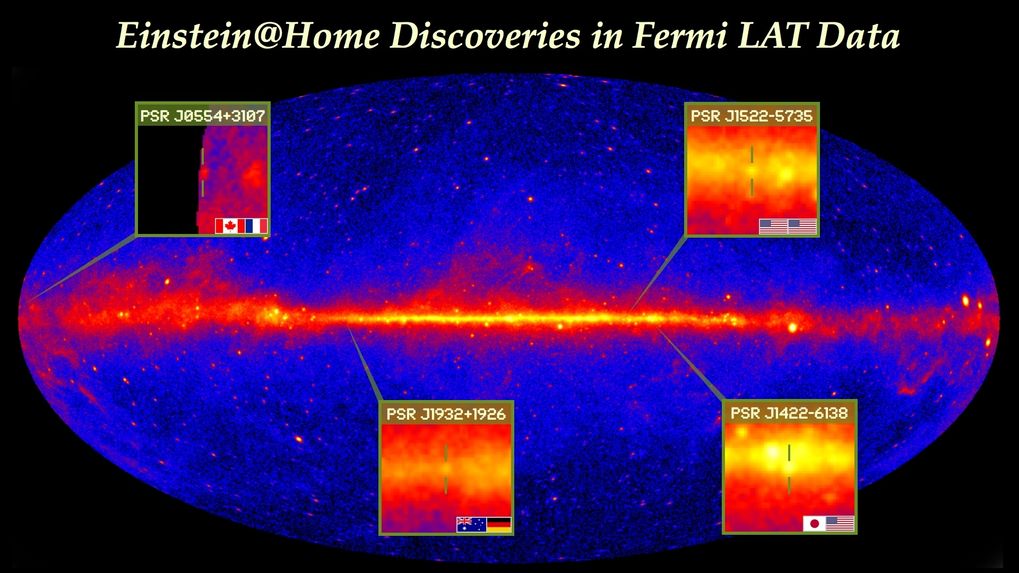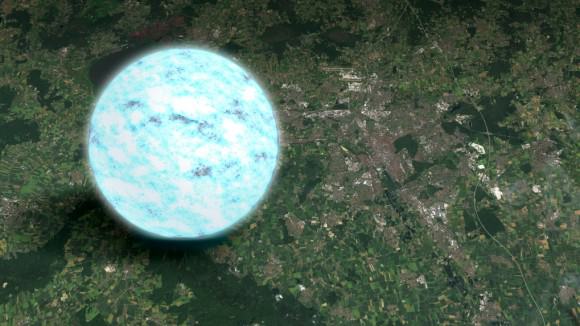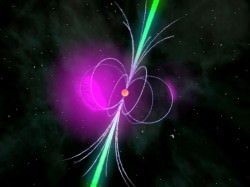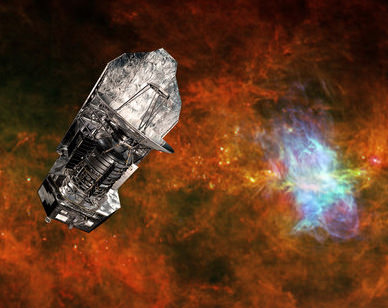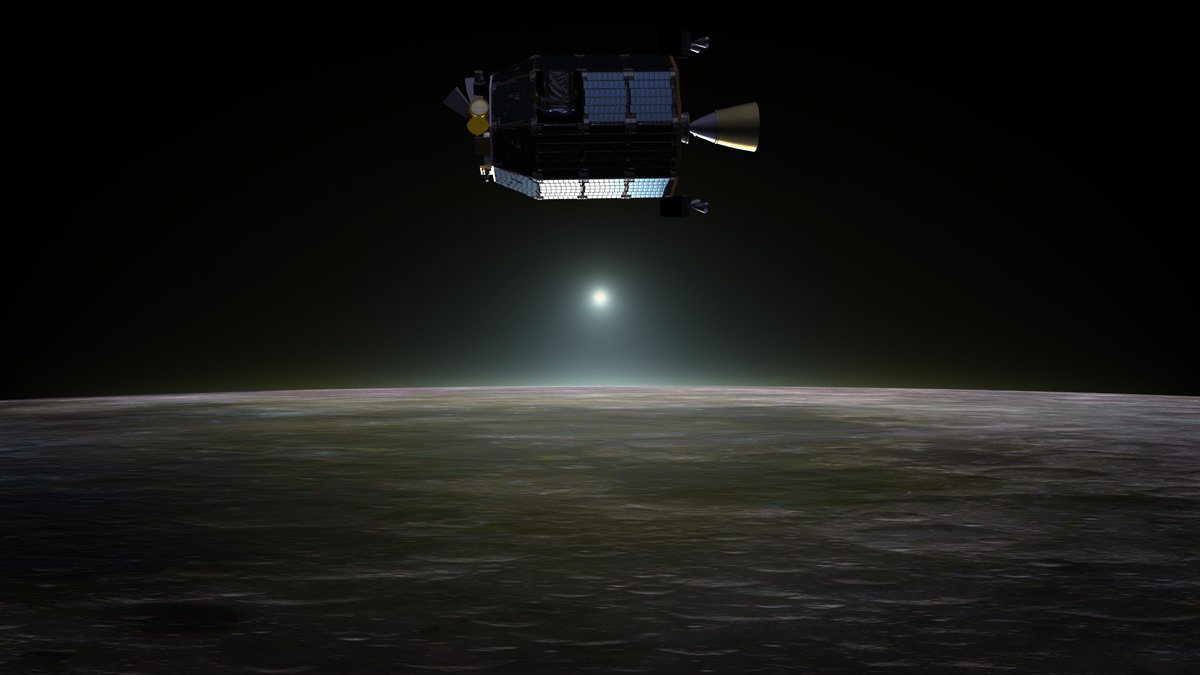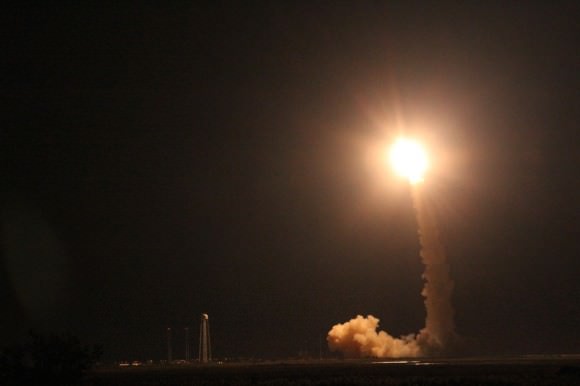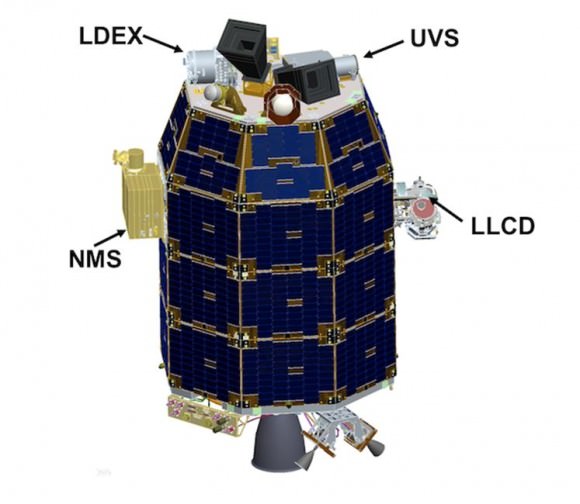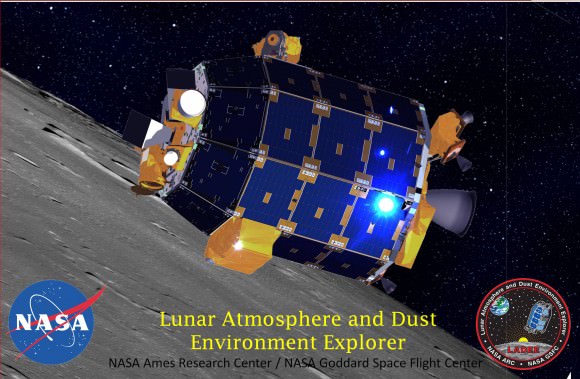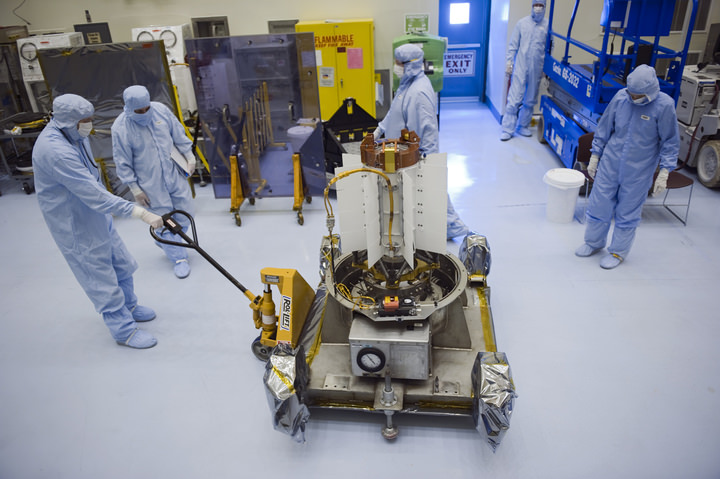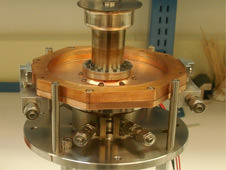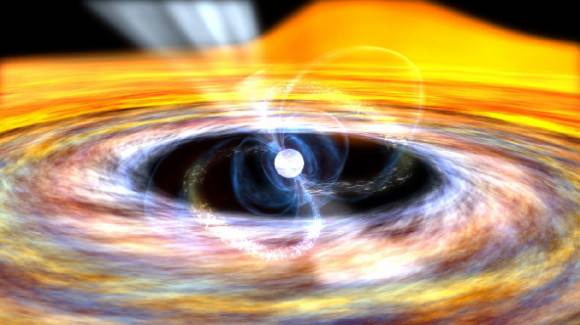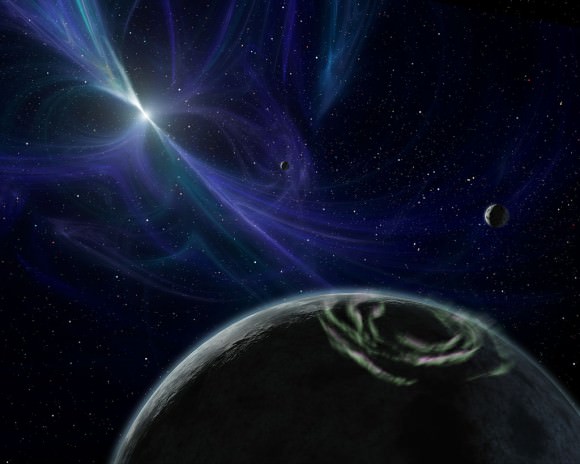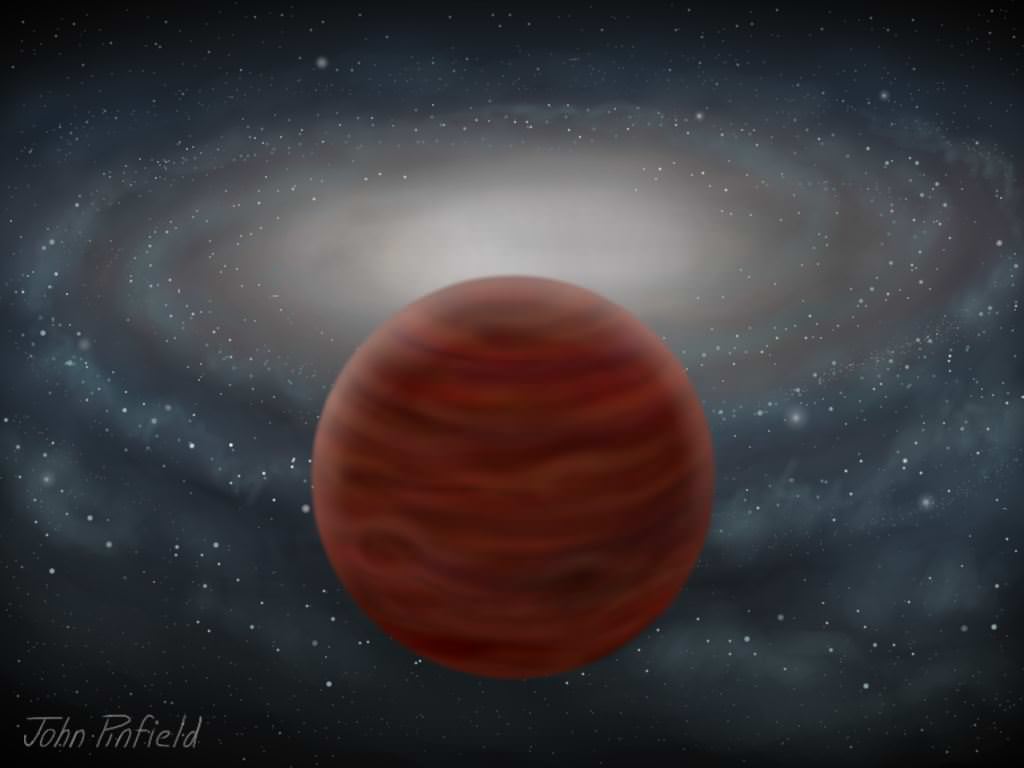“ISON Lives!!!”
“ISON R.I.P…”
Those are just some of the possible headlines that we’ve wrestled with this week, as Comet C/2012 S1 ISON approaches perihelion tomorrow evening. It’s been a rollercoaster ride of a week, and this sungrazing comet promises to keep us guessing right up until the very end.
Comet ISON reaches perihelion on U.S. Thanksgiving Day Thursday, November 28th at around 18:44 Universal Time/ 1:44 PM Eastern Standard Time. ISON will pass 1.2 million kilometres from the surface of the Sun, just over eight times farther than Comet C/2011 W3 Lovejoy did in 2011, and about 38 times closer to the Sun than Mercury reaches at perihelion.
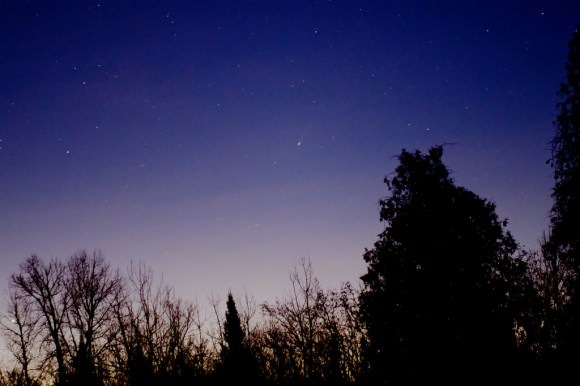
Earth-based observers essentially lost sight of ISON in the dawn twilight this past weekend, and there were fears that the comet might’ve disintegrated all together as it was tracked by NASA’s STEREO spacecraft. Troubling reports circulated early this week that emission rates for the comet had dropped while dust production had risen, possibly signaling that fragmentation of the nucleus was imminent. Certainly, this comet is full of surprises, and our observational experience with large sungrazing comets of this sort is pretty meager.
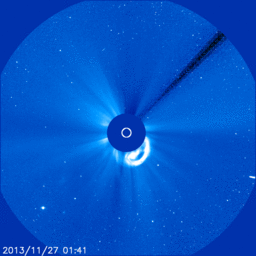
However, as ISON entered the field of view of the Solar and Heliospheric Observatory’s LASCO C3 camera earlier today it still appeared to have some game left in it. NASA’s Solar Dynamics Observatory will pick up ISON starting at around 17:09UT/12:09 PM EST tomorrow, and track it through its history-making perihelion passage for just over two hours until 19:09UT/2:19PM EST.
And just as with Comet Lovejoy a few years ago, all eyes will be glued to the webcast from NASA’s Solar Dynamics Observatory as ISON rounds the bend towards its date with destiny… don’t miss it!
Note: you can also follow ISON’s current progress as seen from SOHO at their website!
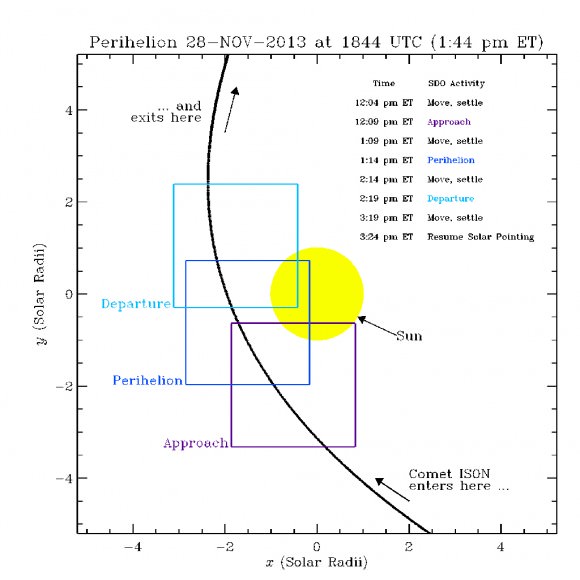
For over the past year since its discovery, pundits have pondered what is now the astronomical question of the approaching hour: just what is ISON going to do post-perihelion? Will it dazzle or fizzle? In this context, ISON has truly become “Schrödinger’s Comet,” both alive and dead in the minds of those who would attempt to divine its fate.
Recent estimates place ISON’s nucleus at between 950 and 1,250 metres in diameter. This is well above the 200 metre size that’s considered the “point of no return” for a comet passing this close to the Sun. But again, another key factor to consider is how well put together the nucleus of the comet is: a lumpy rubble pile may not hold up against the intense heat and the gravitational tug of the Sun!
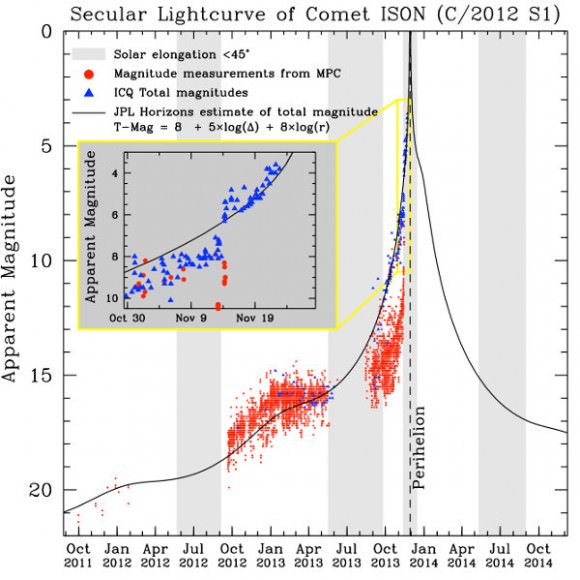
But what are the current prospects for spotting ISON after its fiery perihelion passage?
If the comet holds together, reasonable estimates put its maximum brightness near perihelion at between magnitudes -3 and -5, in the range of the planet Venus at maximum brilliancy. ISON will, however, only stand 14’ arc minutes from the disk of the Sun (less than half its apparent diameter) at perihelion, and spying it will be a tough feat that should only be attempted by advanced observers.
Note that for observers based at high northern latitudes “north of the 60,” the shallow angle of the ecliptic might just make it possible to spot Comet ISON low in the dawn after perihelion and before sunrise November 29th:
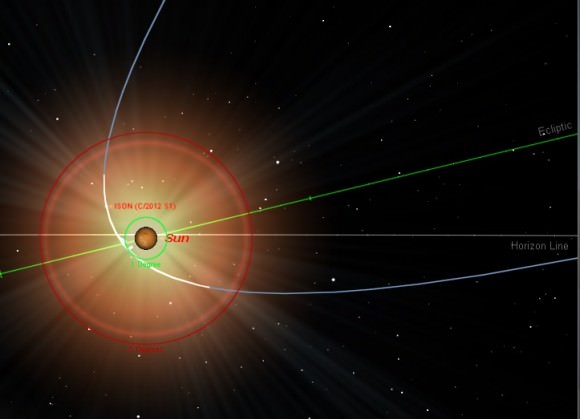
We’ve managed to see the planet Venus the day of solar conjunction during similar circumstances with the Sun just below the horizon while observing from North Pole, Alaska.
Most northern hemisphere observers may catch first sight of Comet ISON post-perihelion around the morning of December 1st. Look low to the east, about half an hour before local sunrise. Use binoculars to sweep back and forth on your morning comet dawn patrol. Note that on December 1st, Saturn, Mercury, and the slim waning crescent Moon will also perch nearby!
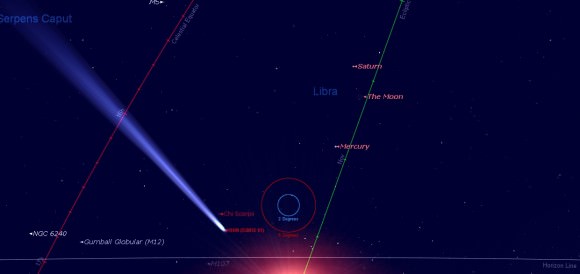
Comet ISON will rapidly gain elevation on successive mornings as it heads off to the northeast, but will also rapidly decrease in brightness as well. If current projections hold, ISON will dip back below magnitude 0 just a few days after perihelion, and back below naked eye visibility by late December. Observers may also be able to start picking it up low to the west at dusk by mid-December, but mornings will be your best bet.
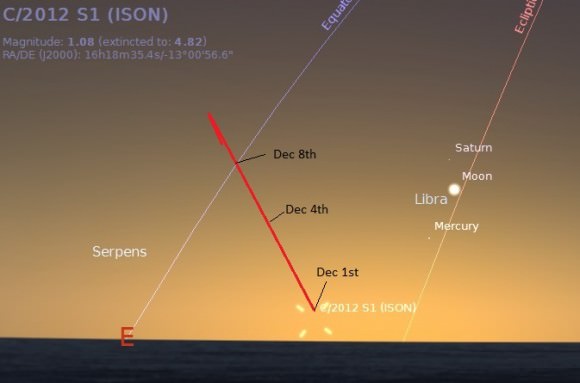
Keep in mind, if ISON fizzles, this could become a “death-watch” for the remnants of the comet, as fragments that might only be visible with binoculars or a telescope follow its outward path. If this turns out to be the case, then the best views of the “Comet formerly known as ISON” have already occurred.
Another possible scenario is that the comet might fragment right around perihelion, leaving us with a brief but brilliant “headless comet,” similar to W3 Lovejoy back in late 2011. The forward light scattering angle for any comet is key to visibility, and in this aspect, ISON is just on the grim edge in terms of its potential to enter the annals of “great” comets, such as Comet Ikeya-Seki back in 1965.
ISON will then run nearly parallel to the 16 hour line in right ascension from south to north through the month of December as it crosses the celestial equator, headed for a date with the north celestial pole just past New Years Day, 2014.
Whether as fragments or whole, comets have to obey Sir Isaac and his laws of physics as they trace their elliptical path back out of the solar system. Keep in mind, a comet’s dust tail actually precedes it on its way outbound as the solar wind sweeps past, a counter-intuitive but neat concept we may just get to see in action soon.
Here are some key dates to watch for as ISON makes tracks across the northern hemisphere sky. Passages are noted near stars brighter than +5th magnitude and closer than one degree except as mentioned:
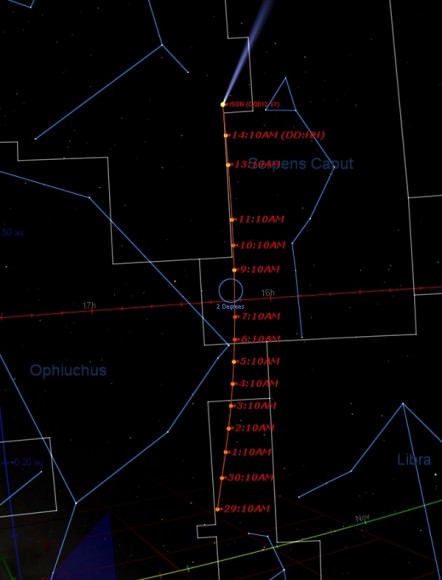
December 1st: ISON is grouped with Saturn, Mercury and the slim crescent Moon in the dawn.
December 2nd: Passes near the +4.9 magnitude star Psi Scorpii.
December 3rd: Passes into the constellation Ophiuchus.
December 5th: Passes near the +2.7 magnitude multiple star Yed Prior.
December 6th: Crosses into the constellation Serpens Caput.
December 8th: Crosses from south to north of the celestial equator.
December 15th: Passes into the constellation Hercules and near the +5th magnitude star Kappa Herculis.
December 17th: The Moon reaches Full, marking the middle of a week with decreased visibility for the comet.
December 19th: Passes into the constellation of Corona Borealis.
December 20th: Passes near the +4.8th magnitude star Xi Coronae Borealis.
December 22nd: Passes 5 degrees from the globular cluster M13. Photo op!
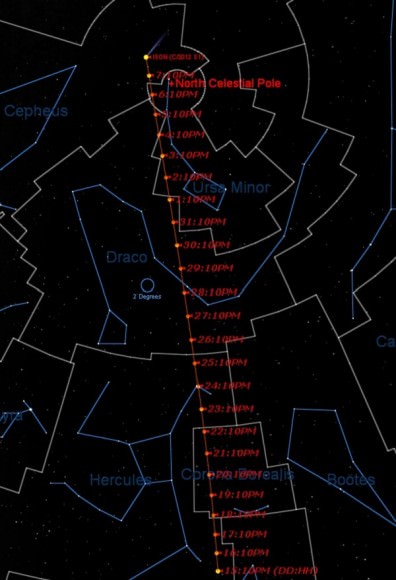
December 23rd: Crosses back into the constellation Hercules.
December 24th: Passes near the +3.9 magnitude star Tau Herculis.
December 26th: Comet ISON passes closest to Earth at 0.43 A.U. or 64 million kilometres distant, now moving with a maximum apparent motion of nearly 4 degrees a day.
December 26th: Crosses into the constellation Draco and becomes circumpolar for observers based at latitude 40 north.
December 28th: Passes the +2.7 magnitude star Aldhibain.
December 29th: Passes the +4.8 magnitude star 18 Draconis.
December 31st: Passes the 4.9 magnitude star 15 Draconis.
January 2nd: Crosses into the constellation Ursa Minor.
January 4th: Crosses briefly back into the constellation Draco.
January 6th: Crosses back into the constellation Ursa Minor.
January 7th: Crosses into Cepheus; passes within 2.5 degrees of Polaris and the North Celestial Pole.
And after what is (hopefully) a brilliant show, ISON will head back out into the depths of the solar system, perhaps never to return. Whatever the case turns out to be, observations of ISON will have produced some first-rate science… and no planets, popes or prophets will have been harmed in the process. And while those in the business of predicting doom will have moved on to the next apocalypse in 2014, the rest of us will have hopefully witnessed a dazzling spectacle from this icy Oort Cloud visitor, as we await the appearance of the next Great Comet.
Enjoy the show!

– Got question about Comet ISON? Lights in the Dark has answers!
– Be sure to post those amazing post-perihelion pics of Comet ISON on Universe Today’s Flickr page.

